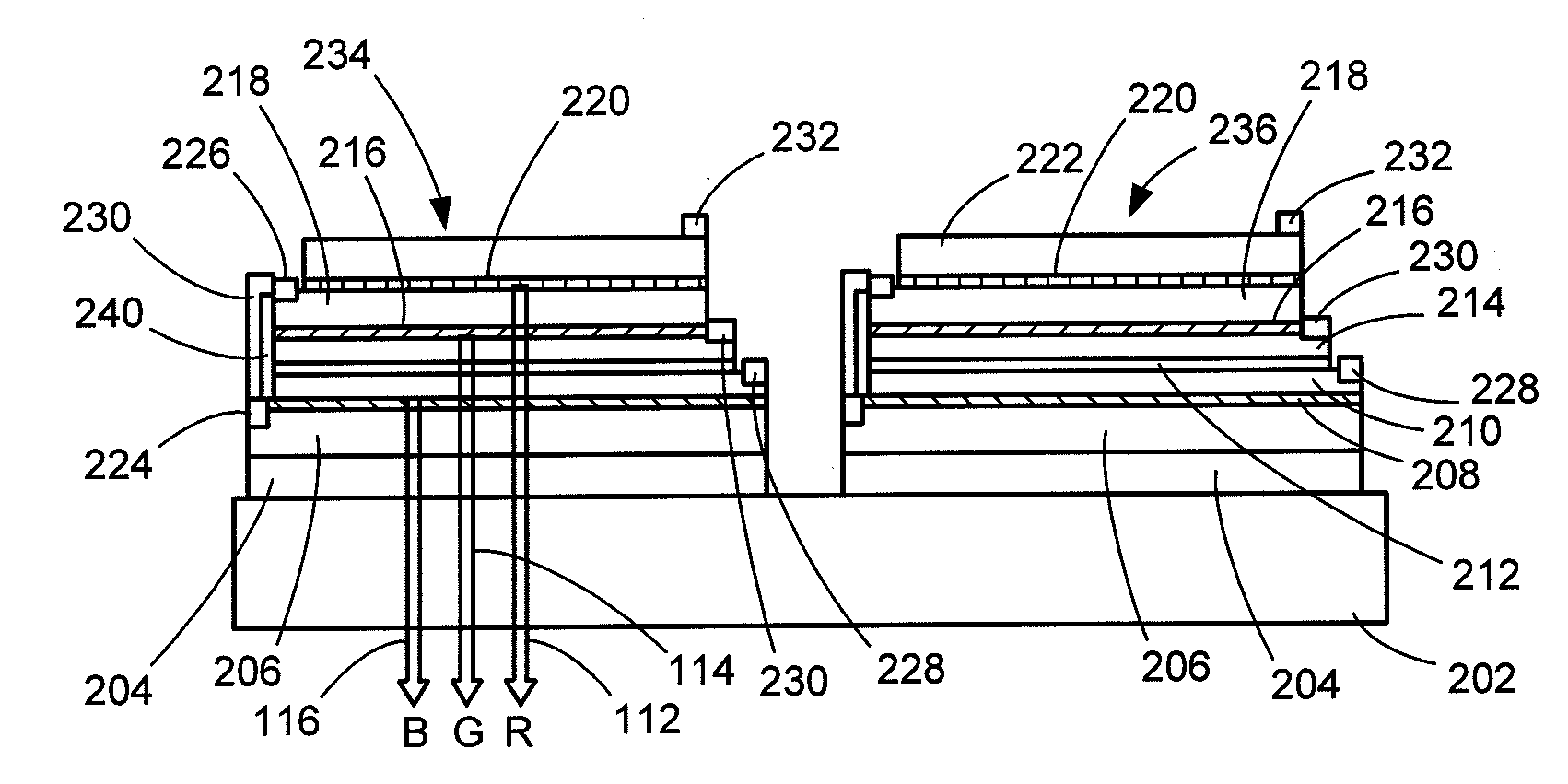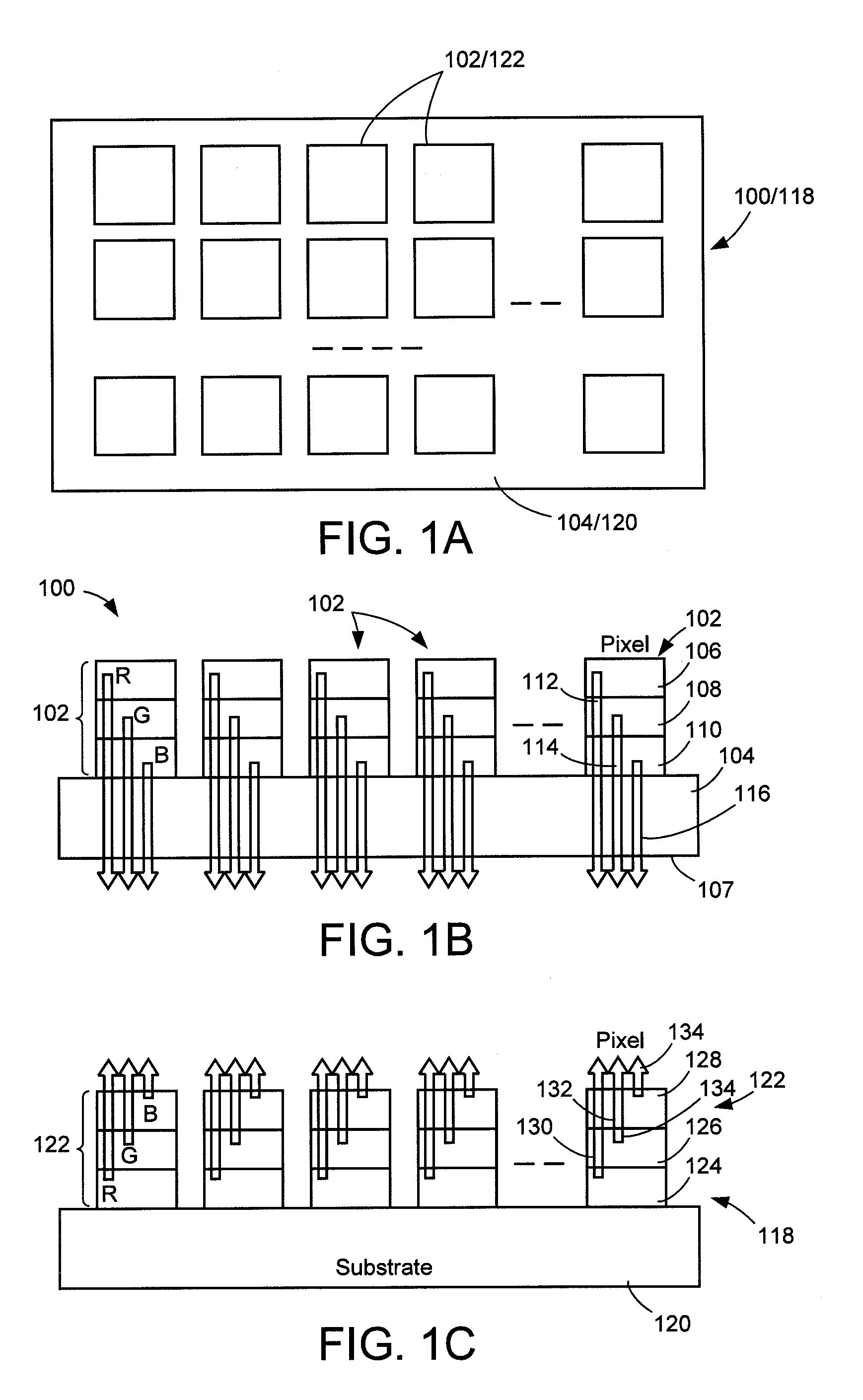Micro-Emitter Array Based Full-Color Micro-Display
a micro-emitter array and full-color technology, applied in the field of micro-emitter array based full-color micro-display, can solve the problems of low power efficiency, limited field of view, brightness, and contrast of modulation-based micro-display, and inorganic counterparts with inferior power efficiency and lifetim
- Summary
- Abstract
- Description
- Claims
- Application Information
AI Technical Summary
Benefits of technology
Problems solved by technology
Method used
Image
Examples
Embodiment Construction
[0037]Embodiments of the present invention provide color microdisplay elements systems and methods for making those elements. More specifically, disclosed is a semiconductor micro-emitter array based microdisplays, and in particular to full-color microdisplays with each pixel containing three micro-emitters—red, green, and blue (RGB)—vertically stacked up to minimize pixel size. The microdisplay may be exclusively based on Group III-nitride semiconductors, with differing indium concentrations in three respective InGaN / GaN active regions for emitting the three RGB colors. Alternatively the microdisplay may be based on hybrid integration of InGaN based III-nitride semiconductors for blue and green emissions, and AlGaInP based (e.g., Group III-V) semiconductors for red emissions. It is possible that other III-V structures could be used instead of AlGaInP, however.
[0038]In embodiments, the hybrid integration may be based on wafer bonding, such as SiO2 based adhesive wafer bonding as des...
PUM
 Login to View More
Login to View More Abstract
Description
Claims
Application Information
 Login to View More
Login to View More - R&D
- Intellectual Property
- Life Sciences
- Materials
- Tech Scout
- Unparalleled Data Quality
- Higher Quality Content
- 60% Fewer Hallucinations
Browse by: Latest US Patents, China's latest patents, Technical Efficacy Thesaurus, Application Domain, Technology Topic, Popular Technical Reports.
© 2025 PatSnap. All rights reserved.Legal|Privacy policy|Modern Slavery Act Transparency Statement|Sitemap|About US| Contact US: help@patsnap.com



